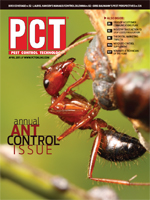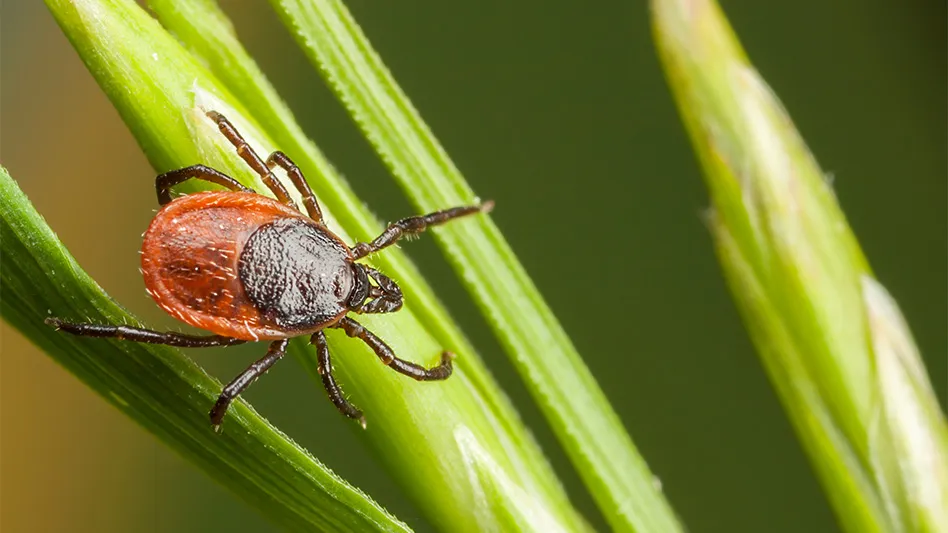While a few geese around a landscaped pond can be an attractive site, the reproductive rates of geese can grow the few into an excessive population that becomes a health hazard. With a single goose able to produce a pound of droppings per day, problems develop as local flocks grow and the droppings become excessive.
The Problem.
When geese congregate around a food plant, their droppings can accumulate on walkways and in break areas, where they can be picked up on employee and visitor shoes to be carried into the plant, said Mike Masterson, CEO and co-owner of Isotech Pest Management, Covina, Calif. Isotech was the star of the Discovery Channel’s “Verminators,” which aired from 2008 to 2009.
Other potential opportunities for cross contamination of foods result from geese feces — both fresh and dried, Masterson said. Fresh droppings can attract flies to the area, which can then be attracted further into the plant by food odors. Then, he added, “When droppings dry and the wind is blowing, those small bacteria can get onto employee clothing” and be carried into food production areas.
Both the feces and airborne bacteria can also contaminate outdoor storage areas, pallets, forklifts or other equipment; and cause further contamination potential if taken back into the building.
In addition to contamination derived from the geese droppings, problems can include crop damage and loss, accumulation of feathers, polluted water sources, aggressive behavior by nesting birds, and safety hazards near roads and airports.
The most severe problems often occur during the geese’s four- to five-week molting season in mid-summer when they become flightless due to shedding and re-growing of their outer wing feathers. During the molt, geese congregate on ponds or lakes that provide a safe place to rest, feed and escape danger. At this point, the geese also will be protecting their babies and are likely to attack people who approach them — even if the goose family is in an employee area or walkway.
Tim Julien, co-owner/operator, Indiana Goose Management and A&T Wildlife Management Company, worked with one food plant that was dealing with ongoing worker’s compensation claims because of geese attacks. The first week, two claims were made, so the female goose was caught and removed. Two weeks later, the male brought a new female back, and another claim was made. And this, Julien said, was at a facility that didn’t even have a pond.
Regulation.
One of the most complex aspects of controlling Canada geese is their protection under the Federal Migratory Bird Treaty Act. While the government now distinguishes between migratory geese and resident, non-migratory populations that are problematic, regulations still limit direct control — such as killing, touching or disturbing live geese, nests or eggs by a person or his/her property without federal authorization.
In addition, there are state and local regulations, every one of which can be different, Julien said. A federal program exists for the online registration of landowners, public land managers and local government for federal authorization to destroy resident Canada goose nests and eggs on property under their jurisdiction, but some states do not participate in this registration program or have additional or stricter requirements. Thus, it is critical that food-processing plants check all regulations or consult with bird control professionals before attempting any control measures.
Control.
Once regulations are met, the next step determining the best legal method for control. How long has the problem been going on? What is the potential for cross contamination? What is attracting the geese to the area? All are questions Masterson said need to be considered to determine the best control method.
An additional consideration is time of year. It is important to implement management methods before geese settle into an area, create nests or lay eggs. Otherwise, Masterson said, “once they are set up, they will keep coming back.”
Julien reinforces this point, noting that control needs to begin as soon as spring arrives and pairs of geese begin to be seen flying into the area. If it is early spring and geese are beginning to arrive, he said, “you can harass the geese to try to chase them off before they nest.” Harassment could include dogs, pyrotechnics, remote control boats or anything that will scare geese from the area. “Dogs are the most effective, but they can be the most costly,” Julien said, adding that it is normally better for a commercial establishment such as a food plant to hire professionals for such jobs.
The extent of conditioning innate to geese is evidenced by Julien’s experiences with harassment techniques. Because the methods need to be repeated regularly, he said, “Before long the geese see our trucks and they leave.”
Any possible habitat changes should also be implemented at this time to try to make the area less attractive to the geese. These could include eliminating the water, using wire grid to block a pond, and planting high grasses where geese would fear possible lurking of predators. Once the geese settle in, a next control step would be the manipulation of the nests and/or treating of the eggs so they can’t hatch.
All these methods, however, would need to be ongoing to keep the area from being attractive to geese and/or eliminate all egg hatching.
Another method of control Julien had employed is that of catch and release. “In Indiana, we can carry the geese to a Fish & Wildlife area and release them. The problem is that there is only so much room for geese even there.” Other options, he said, are to euthanize the geese and donate them for human or large cat consumption. While euthanized geese can be taken to a landfill, Julien said, “We want to use them whenever we can.”
One of the best things a plant can do to manage geese populations and reduce the potential of cross contamination is to hire a professional or implement a training program for employees, Masterson said. Too often employees encourage and feed geese in outdoor break areas, thinking they are “helping” the geese on their migration north or south. But they are actually encouraging the geese to settle in the area, and at that point, he said, “you are your own worst enemy.”
The Seasonal Cycle Resident Canada Geese:
- tend to return to their place of birth and use the same nesting and feeding sites year after year.
- can live for 15-25 years.
- begin breeding at 2-3 years old, with a female goose able to produce more than 50 young in her lifetime.
- mate for life, but if one member dies, the other will mate again.
- return to nesting areas in late February or March; lay and incubate eggs through April, with peak hatching in late April or early May.
- aggressively defend their nests, often attacking if approached.
- may move to new brood-rearing areas after hatching, to appear suddenly “out of nowhere” at ponds bordered by lawns.
- molt in mid-summer, during which they are flightless and congregate on ponds or lakes that provide a safe place to rest, feed and escape danger. Severe problems often occur at this time of year.
- generally increase the distance of their feeding flights in the fall and may be found away from water. Large flocks may feed in large lawns and fields during the day, and return to lakes and ponds to roost at night.
- migrate to open water areas when ice or snow eliminates feeding areas, where they remain until milder weather returns and nesting areas open up.
Additional Sources: Maryland Department of Natural Resources; Florida Department of Wildlife Ecology and Conservation; U.S. Fish & Wildlife Services.
The author is managing editor of QA magazine and can be contacted at llupo@giemedia.com.

Explore the April 2011 Issue
Check out more from this issue and find you next story to read.
Latest from Pest Control Technology
- Ground Control
- Scientists, PMPs Collaborating to Map Termite Distribution in Southern U.S.
- Viking Pest Control Organizes a Charity Bike Build for Local Families
- Gaining Control of Structure-Infesting Carpenter Ants
- Big Blue Bug’s Brian Goldman Receives Rhode Island Small Business Person of the Year Award
- UF Researchers Examine How Much Bait it Takes to Eliminate a Subterranean Termite Colony
- Women in Pest Control Group Continues to Grow, Provide Opportunities in the Industry
- NPMA Announces Results of 2024-2025 Board of Directors Election





